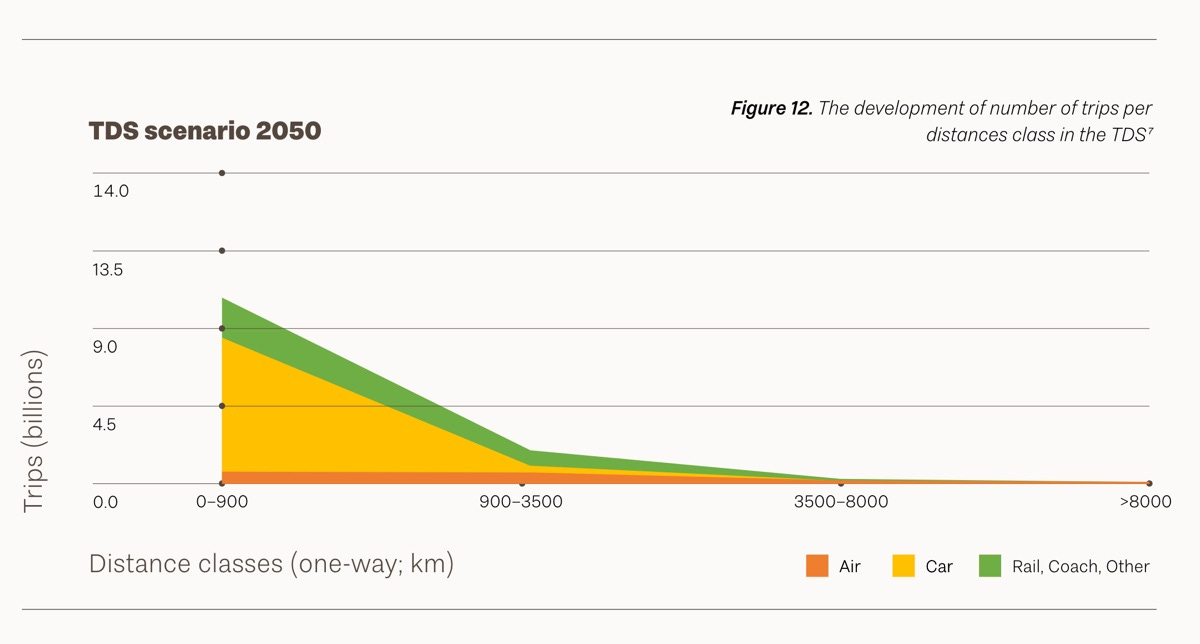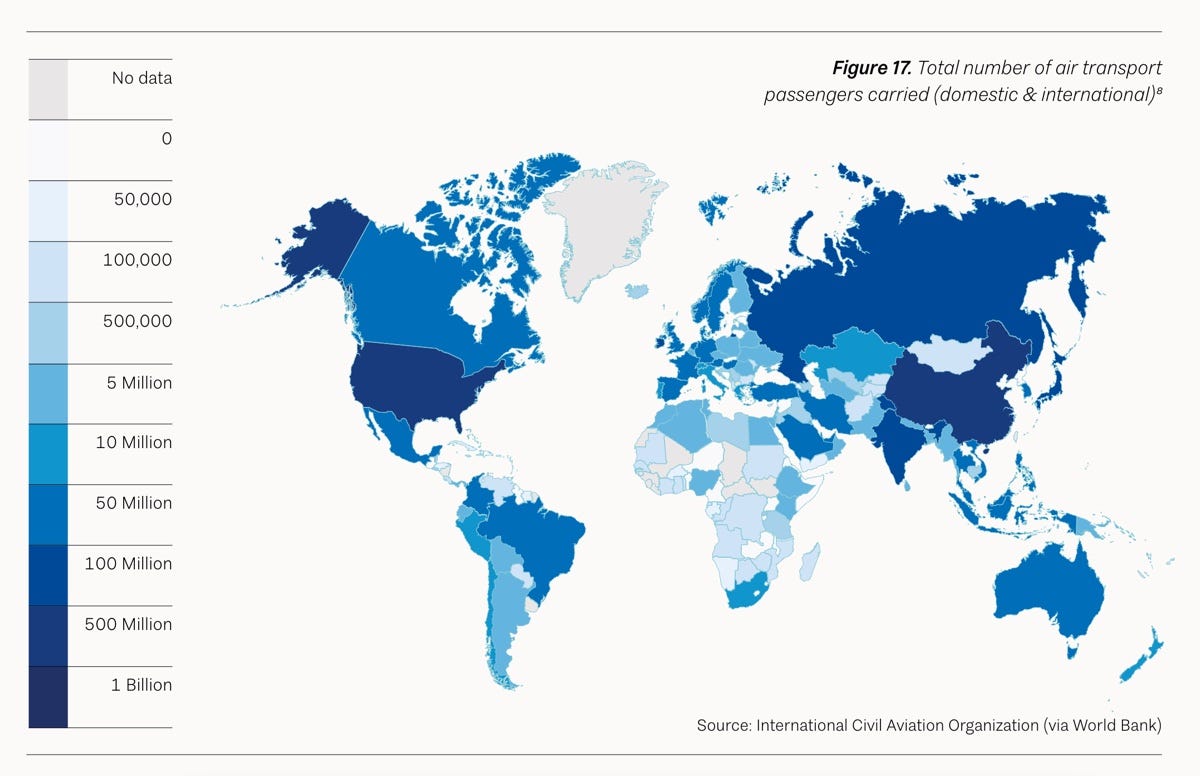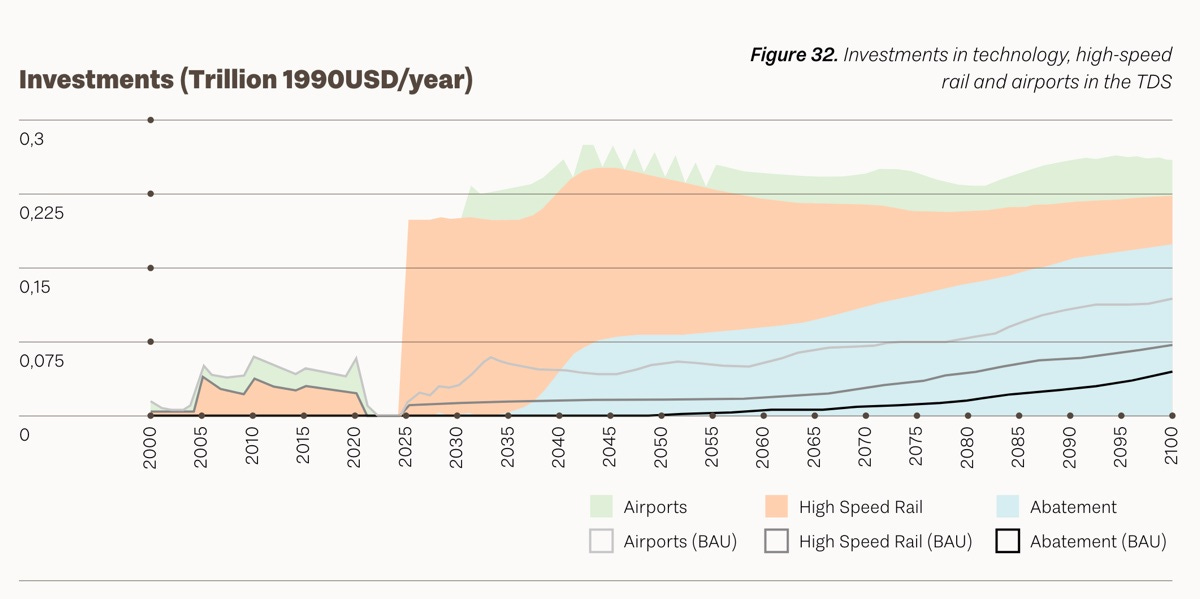On March 1, The Travel Foundation released “Envisioning Tourism in 2030 and Beyond: The Changing Shape of Tourism in a Decarbonising World”. Some teasers from it surfaced a while back, and while they were bad enough, the full report is a doozy.
Writes Travel Foundation CEO Jeremy Sampson:
“We have delayed action for too long, and as a result, our options have narrowed. This assessment should act both as wakeup call and motivation to act. There is huge opportunity for travel and tourism in a decarbonising world, but we must act with urgency and unite in our vision for a “good” transition.”
In the report, the authors consider a simple question—what does the travel industry need to do to meet the targets outlined in the Paris Agreement? To determine this, they put the travel industry through a series of scenarios, using 40 different interventions, to see how things would look in 2050. The grouped interventions fall into six broad categories: Alternative fuel and energy sources, technology, infrastructure policies, travel speed, taxes and subsidies, and travel behaviour.
And you thought your itinerary was complicated. Source: The Travel Foundation.
Their initial approach was to mix and match these 40 interventions into four main pathways, essentially a strong versus weak approach. The problem was, this yielded no scenario that came close to meeting the emission targets. Approach two was to take the four most often discussed categories—offsetting, technology, sustainable aviation fuel, and taxes and subsidies—and try again.
This approach also failed—no one of the four pathways would get the industry to where it needed to be. From here they came up with the TDS—the Tourism Decarbonisation Scenario—and ran with it. The report maintains the TDS can get the industry over the finishing line, but the yards, they are going to be hard.
We’ll be needing more bamboo straws. Source: The Travel Foundation.
There are some enormous assumptions built into the report. A proposal to cap airport capacity to 2019 levels. A 100% shift to renewables by accommodation and ground transport. The spending of US$200 billion per year on high speed rail—for the next 40 to 50 years. None of these assumptions are impossible of course, but yes, they are challenging.
Rather than summarising the report, I wanted to look at a few of its suggestions and consider what they would mean for Southeast Asia. As I found out, the disconnect is severe.
Aviation
It should come as no surprise to anyone that aviation gets a flogging. The report gets into the quagmire of what fuels the planes, but two other aspects leap out.
Cork the airports
The report suggests that airport capacity needs to be capped at 2019 levels. More than anything else in the report, this reads like screaming into the void. What is happening in the real world is the opposite of what the report advises. Here’s a few examples.
The TDS goal. Source: The Travel Foundation.
In Thailand, Bangkok’s Suvarnabhumi is upgrading its capacity from 45m per year to 120m. The city’s second airport, Don Muang is going from from 30m to 48m. U-tapao, down near Pattaya, pretty much Bangkok’s third airport, is going from 1.5m to 5m. Vietnam plans to add nine new airports from the current 22. Singapore’s new terminal 5 at Changi will have a capacity of 50m passengers—more than Terminal 1 and 3 combined. Over in despot-ruled Cambodia, Siem Reap’s new airport will handle 10m, while Phnom Penh’s will welcome 50m by 2050.
You get the idea. If you’d like to get more depressed, my mate James Clark has a good wrap on airport developments ($) in the region.
Hit travellers’ wallets
The report suggests the cost of flying should increase from $0.06 pkm (2019) to $0.10 pkm (2030) and then to $0.18 pkm (2050). This represents a sixty percent increase in airfares by 2030 followed by an 80% increase further down the track. It this comes to pass some of the above-mentioned new airports are going to be pretty sleepy.
Distance matters
Another aspect the report looks at is the distance people travel. With long haul flights being the most damaging, this gets plenty of attention. Long haul, which the report describes as flights over 16,000 km return, accounted for only 2% of trips in 2019, but 19% of emissions. Left unchecked, the report estimates their share will grow to 8% of trips and 41% of emissions.
People will still travel, just not as far. Source: The Travel Foundation.
With this in mind, the report suggests a long haul flight cap to 2019 levels (around 120 million return trips). Given the share of emissions this form of travel accounts for, this makes sense. So with Southeast Asia in mind, what would this mean?
London, Paris or Frankfurt to Bangkok are are long haul, as is anywhere in the Americas. Closer to home, Australia, China, South Asia and parts of Africa slip in, but Europe and the Americas are all toast.
There are sustainability pros and cons to this. In 2019, Germans visiting Indonesia stayed an average of almost 16 days, with an average high of over 18 days. In comparison, Malaysians stayed an average of under six days with a high of almost eight. Given the relative distances, it should come as no surprise that almost ten times as many Malaysians visited. Of Indonesia’s inbound tourists for 2019, four of the top five sources (Germany, France, UK and USA) are both long haul and the longest staying. From an emissions point of view, which is worse?
Elsewhere, Thailand is after a doubling (by 2027, from 2019 levels) of inbound tourists—from 40m to 80m. Who knows what random number generator the number came from, but how does it work with long haul capped? By Southeast Asian standards, Thailand’s approach is particularly egregious, and yet regional destinations strive to model themselves ($) on its A-grade unsustainable approach to tourism.
Fewer, longer, better
The above ties in with the sections aimed at tour companies, tourism boards and so on. The report recognises that if the above all happen (big if), some destinations will feel the pinch more than others. Should island destinations such as Fiji, the Maldives or the Seychelles do the same heavy lifting as Italy or Germany? The report suggests no—the implementation of these changes needs to be equitable. Again back to Sampson:
“We also want to bring attention to the need for fairness and equity in the way tourism transitions to net zero. The policies we draft, the investments we make and the products we develop will either exacerbate or lessen existing inequalities. Will vulnerable communities once again be handed the worst deal? Or will underrepresented voices be listened to and acted upon?”
Long the mantra in national carbon cutting targets—there is precious little walking the talking. Small island nations and the developing world should be wary of holding their breath on this one, though it would be nice is Sampson’s wish is granted.
Allocating blame—and responsibility. Source: The Travel Foundation.
The report also pushes the incentivising of longer stays, which is smart. There’s a few ways to do this, and while the report doesn’t mention it, longer visas for tourists is the obvious one. One that does slip in is the mandating of minimum stays, something I strongly support. It also suggests tour companies should shape demand rather than be a slave to it—another strong agree from me. While they are far from the worst operator on the planet, a statement in the report by Australian tour company Intrepid Travel, highlights the twin challenges of inertia and can-kicking. They write:
“Our supply chain represents more than 80 per cent of our overall Scope 3 emissions, with a large portion accounted for in transportation. Decarbonizing our supply chain – specifically transportation – relies on availability of electrical vehicles and high-speed ground transport. That, in turn depends on different players, including governments, prioritising the phasing out of fossil fuels in favour of clean technologies.”
Get your wallet out. Source: The Travel Foundation.
As Emily Atkin writes, this waiting on governments is a fool’s errand, and is part of what got as here in the first place. Yes, electric vehicles are not widespread yet in Southeast Asia, but, as I’ve written before, domestic flights are a far bigger issue. Tour companies—at least those that purport to be responsible actors—need to remove them. Start reshaping that demand yesterday.
Reframe the travel experience
While many of the report’s recommendations are beyond the reach of individuals, one is. There is one thing that is within the control of every single tourist on the planet—how they travel. If you’re not sure where to start on your own reframing, reading the Travel Foundation report would be a good first step.
Further reading
If you’re a newish Couchfish reader and found the above of interest, you may enjoy the series I wrote last year on rethinking tourism. Links to the series are below—they are all free to read.
National Chocolate Milk Day (World Tourism Day)
Nice Tourism (Sustainable Tourism)
The Benevolent Lie (Responsible Tourism)
The Year Is 2006. The Town Is Luang Prabang (Pro-poor Tourism)
Zoom in to the Red Plastic Chairs (Slow Travel)
The Petro-bourgeoisie (Flying, carbon etcetera)
Reality Check (Tour companies)
Follow the Money (Money matters)
Foundations Matter (Community Based Tourism)
Couchfish is 100 per cent independent and reader-supported. If you’re not already a subscriber, and you’d like to show your support, become a paying subscriber today for just US$7 per month—you can find out more about Couchfish here—or simply share this story with a friend.
Don’t forget, you can find the free podcasts on Apple, Pocket Casts and Spotify as well as right here on Couchfish.
















